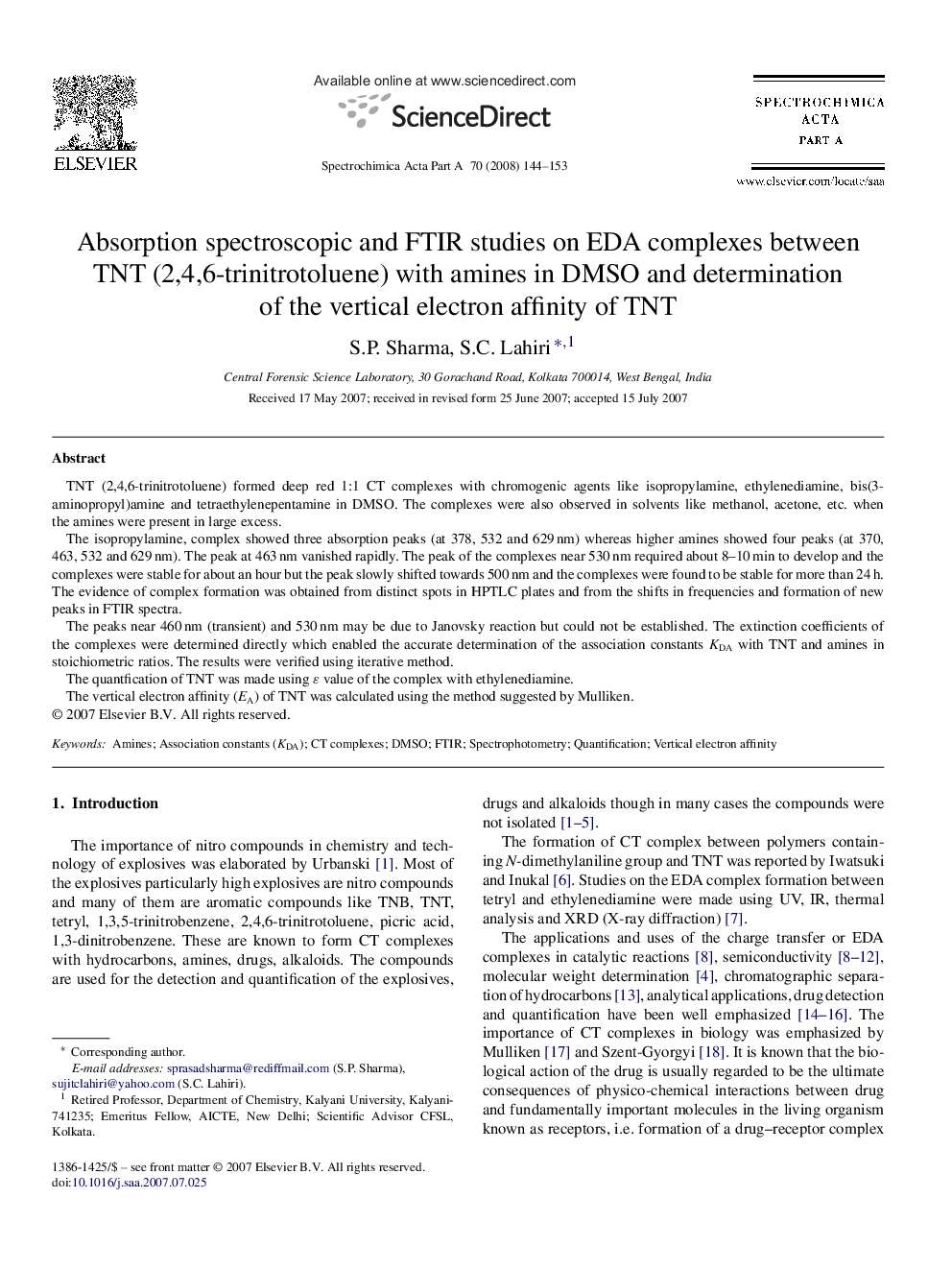| Article ID | Journal | Published Year | Pages | File Type |
|---|---|---|---|---|
| 1234926 | Spectrochimica Acta Part A: Molecular and Biomolecular Spectroscopy | 2008 | 10 Pages |
TNT (2,4,6-trinitrotoluene) formed deep red 1:1 CT complexes with chromogenic agents like isopropylamine, ethylenediamine, bis(3-aminopropyl)amine and tetraethylenepentamine in DMSO. The complexes were also observed in solvents like methanol, acetone, etc. when the amines were present in large excess.The isopropylamine, complex showed three absorption peaks (at 378, 532 and 629 nm) whereas higher amines showed four peaks (at 370, 463, 532 and 629 nm). The peak at 463 nm vanished rapidly. The peak of the complexes near 530 nm required about 8–10 min to develop and the complexes were stable for about an hour but the peak slowly shifted towards 500 nm and the complexes were found to be stable for more than 24 h. The evidence of complex formation was obtained from distinct spots in HPTLC plates and from the shifts in frequencies and formation of new peaks in FTIR spectra.The peaks near 460 nm (transient) and 530 nm may be due to Janovsky reaction but could not be established. The extinction coefficients of the complexes were determined directly which enabled the accurate determination of the association constants KDA with TNT and amines in stoichiometric ratios. The results were verified using iterative method.The quantfication of TNT was made using ɛ value of the complex with ethylenediamine.The vertical electron affinity (EA) of TNT was calculated using the method suggested by Mulliken.
